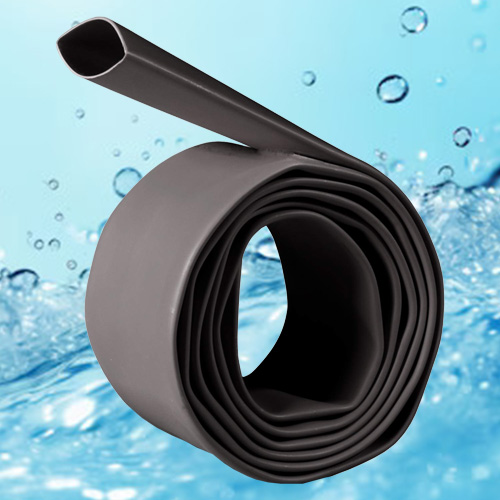 Heat shrink tubing is commonly used for waterproofing electrical connections, particularly in applications where exposure to moisture is a concern. Here’s how waterproofing through heat shrink works:
Heat shrink tubing is commonly used for waterproofing electrical connections, particularly in applications where exposure to moisture is a concern. Here’s how waterproofing through heat shrink works:
Selecting the Right Tubing: Choose heat shrink tubing that is specifically designed for waterproofing applications. This type of tubing often has an inner lining of adhesive or sealant that melts and flows when heated, creating a watertight seal around the connection.
Preparing the Connection: Before applying the heat shrink tubing, ensure that the connection is clean and free of any debris or moisture. This helps in achieving a secure and durable seal.
Cutting the Tubing: Cut a piece of heat-shrink tubing long enough to cover the entire connection and provide a sufficient overlap on both sides. It’s better to have a slightly longer piece than necessary to ensure complete coverage.
Sliding the Tubing: Slide the heat shrink tubing over the connection, ensuring it covers the entire length of the exposed area. Make sure there is enough tubing to cover any crimps or solder joints as well.
Applying Heat: Use a heat source such as a heat gun or a lighter to apply heat evenly to the heat-shrink tubing. As the tubing heats up, it will shrink and conform tightly to the connection, creating a waterproof seal.
Activating the Adhesive: If the heat shrink tubing has an adhesive lining, continue to apply heat until the adhesive melts and flows out of the ends of the tubing. This indicates that the adhesive has formed a watertight seal around the connection.
Cooling and Inspection: Allow the heat-shrink tubing to cool completely before handling the connection. Once cooled, inspect the seal to ensure it is tight and free of any gaps or openings.
Additional Protection (Optional): For added protection, especially in harsh environments, you can apply a layer of silicone sealant over the heat shrink tubing to further enhance its waterproofing capabilities.
By following these steps, you can effectively waterproof electrical connections using heat shrink tubing, providing long-lasting protection against moisture and environmental elements.


